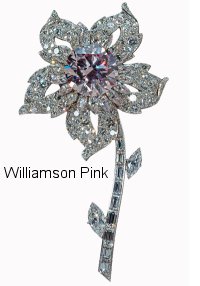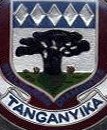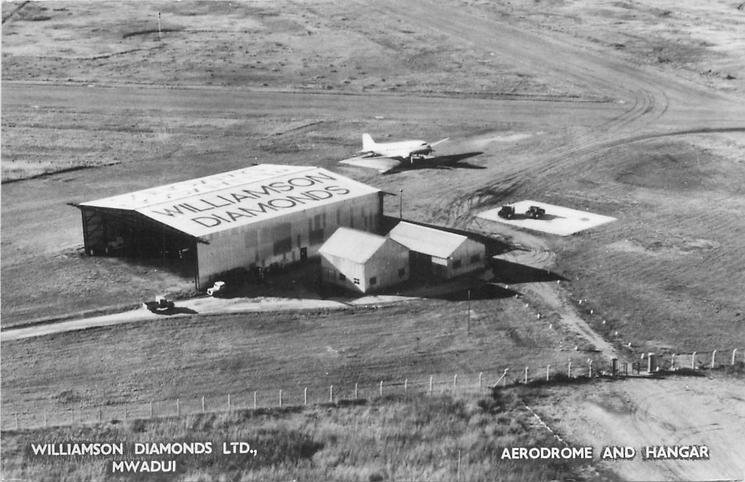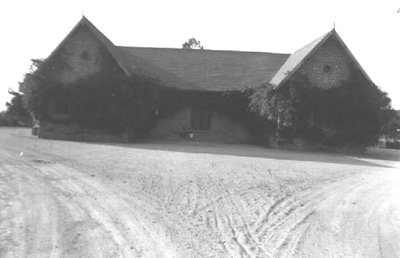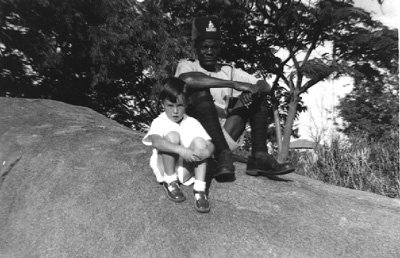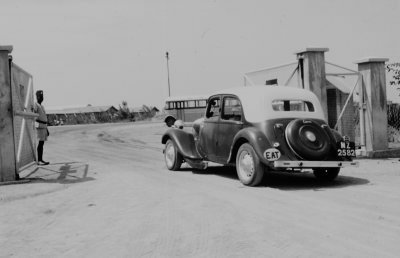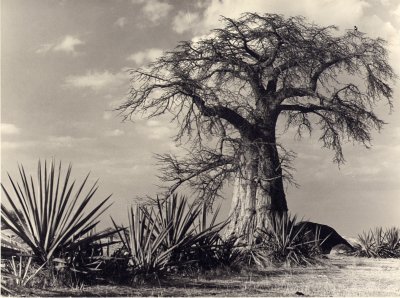Admin Office
The Administration Building 1956 & if you run the curser over it to see it fifty years later.
The Williamson Diamonds Mine handbook states: "For general information it is advised that in addition to the area within the wire, the country immediately outside the wire for a considerable distance in all directions is closed for shooting or hunting of any description."
Click here to find Mwadui on Google Maps
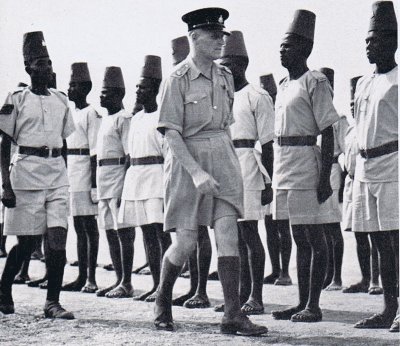
The Mwadui Askari force was officially designated a Tanganyika Auxiliary Police Force
The Chief Security Officer, and his assistant were also gazetted immigration officers and were on the undesirable expulsion committee of Tanganyika.
Left: Supt Burgess inspecting a troop of his 250 strong auxiliary Askari force
Percy Burgess, from London's Scotland Yard, had joined the mine in 1951 and retired at the end of 1953. He was succeeded by Superintendent Hanson from Sheffield.
The Mwadui security/police force was privately owned, funded, and run by Doc, and as such was an unarmed auxiliary force.
Most of the Askari's had previously served in the Kings African Rifles.
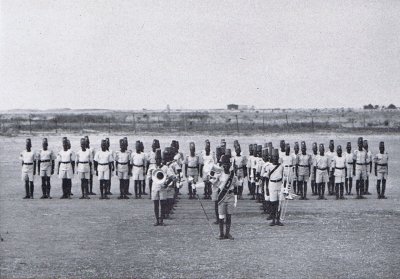
The Askari marching band would perform marching around the mine residential area for about 1 1/2 hours on Saturday evenings and were in residence at the European Club for dancing on Sunday evenings.
The band wore the same khaki uniform as the auxiliary police minus the badge on the fez. The band was eventually incorporated into the Auxiliary Police Force and were required to do eight hours police duty each per week.
Photo from the Hide family collection ©
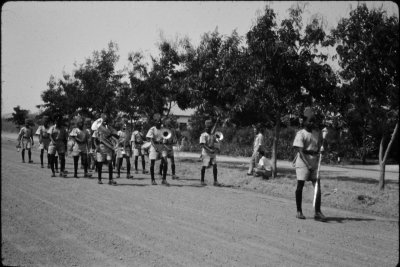
The Mwadui Askari marching band marched to music for 1 1/2 hours on Saturday evenings.
Prior to the European club opening dances were held in the large school room on Sunday evenings with the Askari band in residence.
Photo from the Hide family collection ©
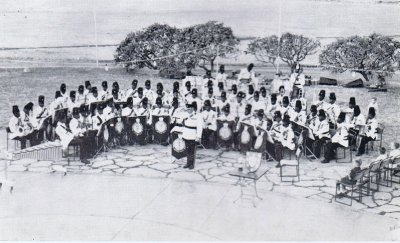
The band conducted by Supt V E Webster
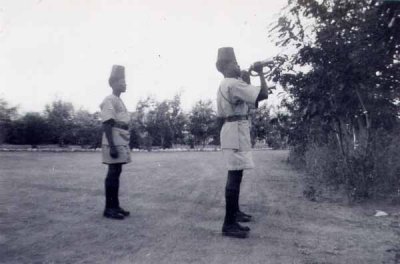
The "Mine" flag being lowered at sunset to the buglers retreat.
It was raised to the bugler's Reveille at sunrise.
The British "Union" flag was only hoisted on special occasions.
Photo from the Hide family collection ©
My younger brother Peter Hide with an Askari at the Head Office
The Askari force were taught basic English literacy.
Photo from the Hide family collection ©
Askari's on duty at the mine's main entrance/exit gate in the 1950s.
Only a pass signed by the Chief Security Officer allowed personnel in or out of the main gate. All vehicles were searched along with non European personnel.
A state police station was manned 24/7 just outside the main gate.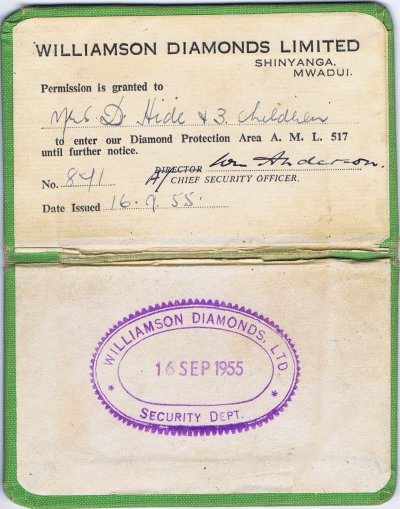
Our security pass signed by the Acting Chief Security Officer Bill Anderson, an ex-Chief Inspector from the Birmingham City Police.
No chip and pin for us in those early days of high tech security.
Photo from the Hide family collection ©
The Baobab tree photographed by Michael G Croft
Run the curser over to see the Admin building in 1997
Flowers and Fruit
The Baobab tree has large whitish flowers
which open at night. The fruit, which grows up to a foot long, contains
tartaric acid and vitamin C and can either be sucked, or soaked in water to
make a refreshing drink.
They can also be roasted and ground up to make a coffee-like drink. The
fruit is not the only part of the Baobab that can be used. The bark is
pounded to make rope, mats, baskets, paper and cloth; the leaves can be
boiled and eaten, and glue can be made from the pollen.
Uses
Fibre from the bark is used to make rope,
baskets, cloth, musical instrument strings, and waterproof hats. While
stripping the bark from the lower trunk of most trees usually leads to their
death, baobabs not only survive this common practice, but they regenerate
new bark.
Fresh baobab leaves provide an edible vegetable similar to spinach which is
also used medicinally to treat kidney and bladder disease, asthma, insect
bites, and several other maladies. The tasty and nutritious fruits and seeds
of several species are sought after, while pollen from the baobabs is mixed with water to make glue.
